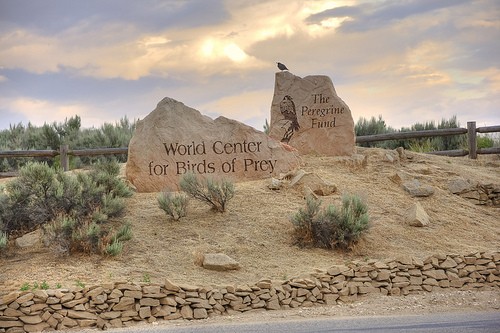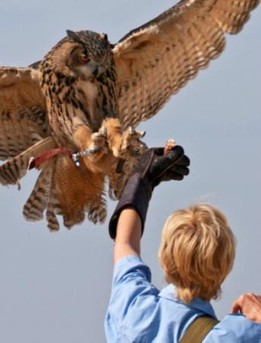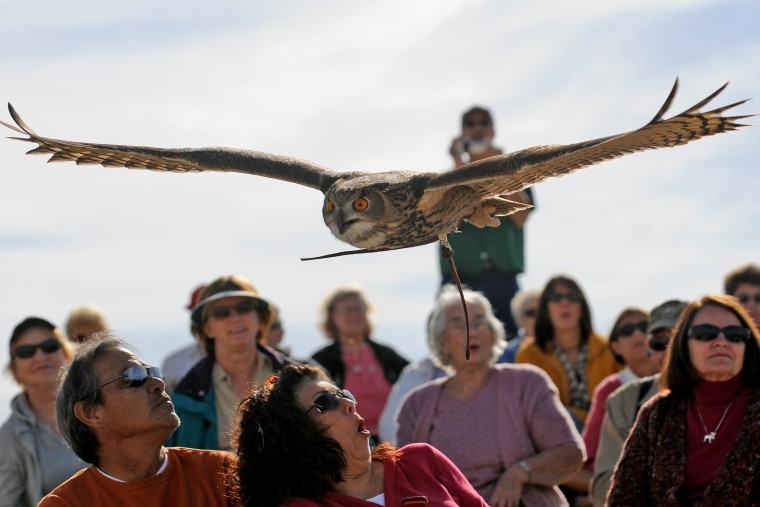World Center For Birds of Prey
Introduction
Text-to-speech Audio
Images
Entrance to the World Center For Birds of Prey

Flight demonstrations

Live demonstrations

Backstory and Context
Text-to-speech Audio
History of the World Center For Birds of Prey
Located outside of Boise and overlooking Treasure Valley, the World Center For Birds of Prey has been fundamental in the conservation and research of various raptors, including falcons, hawks, eagles, ospreys, vultures, and owls.
To combat widespread endangerment around the world, and especially in North America, the Peregrine Fund established its first breeding facilities at Cornell University in 1970 and at the Colorado Division of Wildlife in Fort Collins in 1974. However, with the establishment of the World Center For Birds of Prey in 1984, the Peregrine Fund moved to Boise. This move was highly influenced by Morley Nelson, an acclaimed raptor expert and member of the Peregrine Fund’s board of directors. Nelson was also a native of Boise and thought the opulent landscape ideal for various raptors as well as raptor conservation and research.
Beginning in 1984, the World Center For Birds of Prey has grown to include several facilities on its 580-acre site, including an interpretive center, falconry archives, and breeding facilities. One of the biggest successes of the Peregrine Fund, and therein the World Center For Birds of Prey, was its work recovering the peregrine falcon from near extinction. This project began in the 1960s when it was clear that DDT pollution was gravely endangering peregrine falcons, bald eagles, and other birds of prey. In 1999, the World Center For Birds of Prey hosted an international celebration as the peregrine falcon was taken off the U.S. Endangered Species list.
Interpretive Center Exhibits
Many conservation, breeding, and reintroduction projects at the World Center For Birds of Prey are still ongoing. Current projects involve American Kestrels, Aplomado Falcons, Asian Vultures, California Condors, East African Raptors, Gyrfalcons, Harpy Eagles, Madagascar Raptors, Orange-breasted Falcons, Philippine Eagles, and Ridgway’s Hawks.
Visitors are welcome to visit the World Center to learn about birds of prey at the Velma Morrison Interpretive Center. This indoor/outdoor educational center focuses on raptor biology, ecology, and conservation efforts taking place around the world. Visitors will encounter live falcons, hawks, eagles, and owls at the center, as well as other native and non-native birds. A quarter-mile trail through the Center’s habitat restoration projects showcases the native homes of these birds; the trail also takes visitors to a spectacular overlook of Boise.
